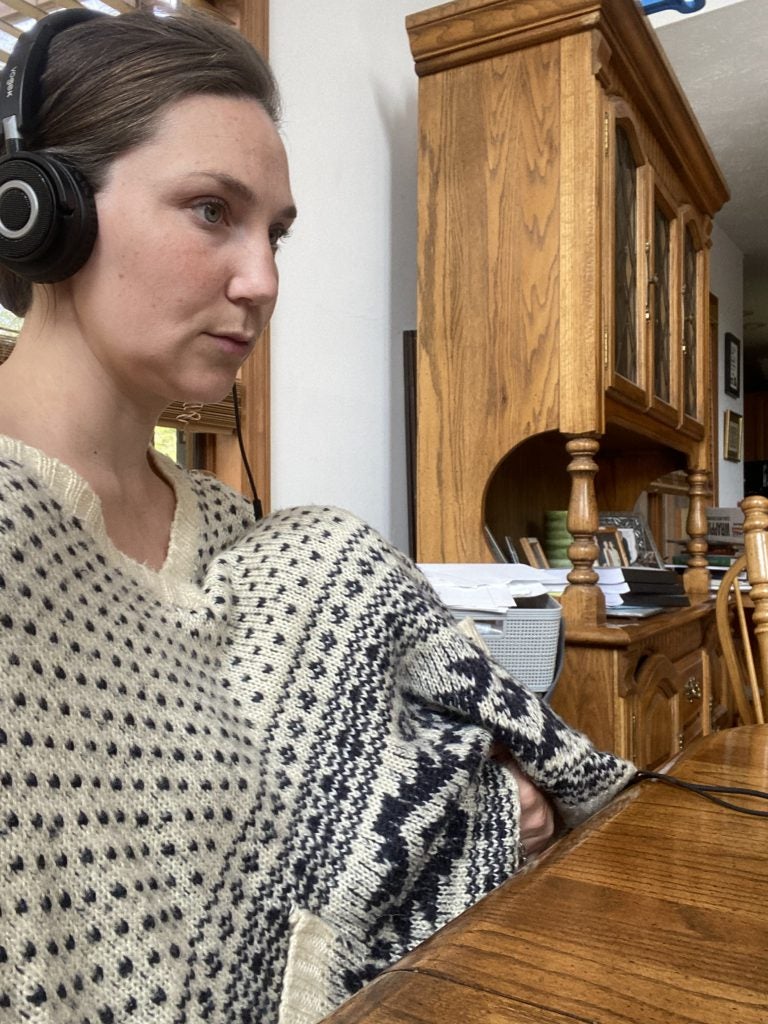By: Yara Altaher
When COVID-19 stay-at-home orders began in late March, I was about to start a new job while finishing my graduate degree and thought it would be just a few weeks before going into the office to meet my new co-workers. I imagine many others felt similarly. Seven months into the pandemic, and still working from home, I see many working parents trying to juggle between their careers and parenting duties with no end in sight. Working parents are bearing the brunt of having to also become teachers trying to acclimate their children to a new and virtual school environment. Nearly half of all school districts in the U.S. started the school year with remote learning, and many childcare centers remain closed or are operating at limited capacity.
As the pandemic continues to expose biases and inequities faced within our country, a study by the U.S. Census Bureau and Federal Reserve found that working women ages 25-44 are disproportionately affected and are three times as likely to not be working due to childcare demands when compared to their partners. It is more important than ever for public leaders to lead with empathy and support birthing people and their families by offering high quality childcare and paid family and medical leave. Last month, we conducted a survey to capture the experiences of working parents during COVID-19 with the aim of better understanding the current barriers they face and solutions they’ve developed since working remotely. If comfortable, participants were also asked to share a photo that encapsulates them being a working parent in the current moment. Here are some of the findings:

“As a mother, I feel I have often been in the position of the “default parent.” My husband’s work schedule is booked with meetings all day so I am usually the one to handle childcare, doctor’s appointments, feedings, etc. I am the one who has been taking on the majority of the childcare responsibility during the work day. Also, while the saying goes “it takes a village to raise a child”, with the pandemic and an infant, we have been unable to lean on our “village” for support.”
-Becky H.
For decades, women have been traditionally expected to stay at home and focus on housework and childcare, facing challenges in overcoming cultural expectations against working women, while their partners remained breadwinners in the workplace. This changed briefly during World War II when women were encouraged to work in the military and defense industry, and the government funded child care while men were away at war. However, that was short-lived and ended at the commencement of the war in 1946. Since then, there hasn’t been any sustained effort to provide federally funded child care support so that primary caretakers – most often women – who want to focus on developing their professional careers have the opportunity to do so. Many women remained employed after the war sparking policy discussions about pregnancy in the workforce. Interestingly, it wasn’t until 1993 that the Family and Medical Leave Act (FMLA) was signed into federal law requiring covered employers to provide unpaid, job protected leave for specific family and medical reasons. Although, exceptions to this including employer size and number of hours worked have left many without access to FMLA. For working parents covered by FMLA and who receive partial or no pay while on leave, 67% reported having financial difficulties. These long-standing challenges that working parents have faced in trying to balance work and family have only been exacerbated during COVID-19.

“When my 5 year old has days he cannot go to school it is impossible for me to work. If schools close again…I mean, we’ll figure it out…but it will be very, very hard to get anything done either for my work or his school work. My husband works outside the home and not around people. But as the baby gets older, he is getting harder and harder for my mom to watch as she has her own health problems. In the beginning I had a different job and had to go half time in order to homeschool my 5 year old in the spring.”
-Christina L.
Birthing people who continue to work remotely often have limited options for childcare and are pressured to either take unpaid or paid leave or work nonstandard hours. One survey participant said she worked “reduced hours, which got me let go from a job. And then I got a [part time] job that has flexibility of schedule which helps.” She also noted that she has tried “working “off hours” aka nights and weekends where needed.” For birthing people and their families, not having social support makes it increasingly difficult to work and attend to the needs of their children. Another working mom and survey participant shared, “If my kid has a temp[erature], they can’t go to daycare until they’re 72 hours fever free (pre Covid, they could come back after 24 hours of being fever free). This makes it hard if one of my kids is sick and then we have to juggle them at home for at least 3 days (more if the fever persists). This is difficult to get work done since we don’t have family out here so sometimes we use [paid time off].”
While Congress passed the Families First Coronavirus Act in April, which allows employees to take up to 12 weeks paid leave with exceptions including businesses with over 500 workers, the pandemic has also shed light on longer term societal issues such as the physical and financial inaccessibility of childcare and the pertinent need for better workplace family-friendly policies. Various states have taken action to put universal child care and pre-kindergarten into practice. Vermont not only supported childcare providers during COVID-19 but also provides publicly funded high quality pre-kindergarten education. According to the Organization of Economic Cooperation and Development, the US ranks last among 41 other countries in government mandated paid leave for new parents, requiring 0 weeks of paid leave. While the Family and Medical Leave Act (FMLA) protects and provides some working parents with unpaid leave for specified family and medical reasons, it also sets a bare minimum of what states are required to enact. States then have the option to expand the FMLA, such as offering paid leave or extending it to all of its workers. Massachusetts is among several other states that already offer or will begin to offer paid family and medical leave (PFML).
In his campaign, Joe Biden has already announced that his administration plans to ensure high-quality, affordable childcare, universal access to pre-kindergarten, and up to 12 weeks of federal mandated paid family and medical leave. In the meantime though, we are still going through a pandemic and working mothers who took the survey offered advice to other parents currently working remotely:
“Lower your expectations. For everything. Then lower them some more…more…a liiiiittle lower…”
“Having a desk and activities that are my toddlers “work”. It helps. But since she isn’t taking naps and quiet time is hit or miss. It’s hard.
“Dad takes the kids in the morning and I pick up in evening. I like the routine when we can”
“Be kind to yourself! Everyone is trying their best in an impossible situation!”
Yara Altaher is a Research Assistant on the Delivery Decisions Initiative team at Ariadne Labs, where she provides support to the Expecting More and Cities Challenge projects. For Expecting More, she assists in the planning and management of narratives centered on growing families with dignity, and for the Cities Challenge, she helps with the design of a tool to inform U.S. cities in maternal health policy making and implementation. When she’s not working towards elevating shared expectations of the care and support people deserve when they are growing their family, she likes spending time with family and friends, cooking and baking.


